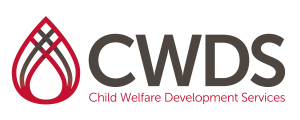CWDS Curriculum
Advanced SDM Supervisor Training (2 day, Modules 1-4)
Level: Advanced
Credits: 12
Intended Audience: This training is for Child Welfare Supervisors
Description of Course:
Goals for attending this course are to increase knowledge of overall SDM practice to increase supervisors’ value as a staff resource, learn ways to integrate SDM assessments and decisions into key supervisory processes, consider how the SDM model fits with other agency practices, such as family-centered approaches, team decision making, etc. and gain knowledge and skill to help motivate workers to contribute to better outcomes through quality SDM implementation
Intended Objectives:
Knowledge
- Understand the outcome and process goals, characteristics, SDM assessment purpose and decisions, associated practice strategies, and key concepts underlying the SDM system in order to support effective caseworker use of the SDM model;
- Increase their expertise in SDM practice in order to serve as a resource to their staff;
- Recognize and understand the importance of using SDM definitions and referencing policy and procedures when completing assessments;
- Understand that all SDM tools are household-based assessments;
- Identify common mistakes associated with SDM assessments and work with their caseworkers to correct them;
- Be able to identify the elements of an effective safety plan and know the process for engaging in safety planning with families;
- Understand how the family’s risk level classification and safety decision informs case opening decisions and frequency of ongoing case contact;
- Recognize the importance of narrative support in case documentation for SDM tool completion;
- Understand the process for engaging caseworkers in case conferences related to the SDM model;
- Understand the key supervisory responsibilities in approving overrides, approving assessments, correcting mistakes, and using risk level to assign cases and support caseworker reassessments;
- Understand the importance of training, coaching, and quality assurance through case reading as a primary intervention;
- Understand and practice the process for completing a review of referrals or cases when a critical incident occurs; and
- Learn the principles, process, and suggested guidelines of referral/case reading using the case reading tools.
SKILLS:
- Identify households and the primary and secondary caregivers in each household;
- Determine when to complete an SDM tool on a household;
- Carry on a basic conversation with a family about safety, risk, and needs;
- Use SDM definitions to support caseworker use of assessments;
- Use SafeMeasures® data to support SDM practice;
- Identify mistakes in completion of SDM assessments and help caseworkers deepen and strengthen their knowledge of SDM assessments;
- Engage in effective case conferences to support the SDM assessment practices of their caseworkers;
- Understand the purpose of overrides/other in SDM assessments and know the difference between an acceptable override and overrides to avoid;
- Understand the process of reviewing and approving assessments;
- Use information in SafeMeasures to support using risk level to assign cases, monitor caseworker contacts, and support reassessments; and
- Support key SDM practices, including explaining assessment purposes and results to families, ensuring rigorous use of immediate safety plans, and making effective decisions about case actions.
VALUES:
- Understand that the SDM system is a comprehensive case management framework for child welfare practice;
- Understand that the SDM system uses research-supported assessments in combination with effective practice strategies and social worker judgment to help social workers assess families in partnership with them and make critical decisions throughout the life of a case;
- Reflect on key issues regarding their supervisor role in supporting SDM practice;
- Appreciate the supervisor’s role in supporting use of SDM assessment and practices in casework with families;
- Appreciate that use of the SDM system supports improvements in child and family outcomes of safety, permanency, and wellbeing;
- Understand that the SDM assessment tools are a prompt for practice in partnership with children, youth, and families; and
- Appreciate and understand the value of SDM tools in supporting transparent conversations with families about safety, risk, and needs.
Topics Include:
Supervisor’s Role in Supporting SDM Tools and Practices
Overview of the SDM System Process and Outcome Goals and Key Concepts That Underlie the SDM System
- Use Safe Measures reports to Obtain Completion Rates
- Tips for Using SDM Definitions to Support Safety and Improved Outcomes
- Spotting Common Mistakes and Supporting
- Supervisor as the Voice of SDM
- Case Conferences to Support Caseworker Development
- Key Supervisory Responsibilities
- Key Considerations in Supporting SDM Casework Practice
- Developing a Unit Plan for Strengthening SDM Practice
Safety Organized Practice (SOP)



